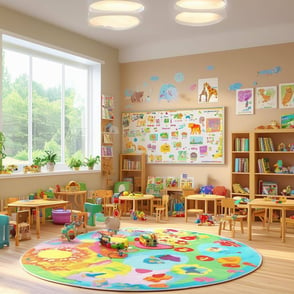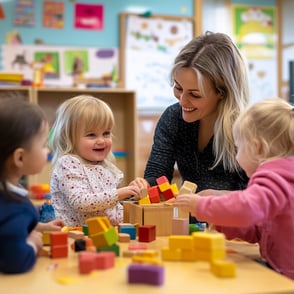You may be asking yourself, what is cultural capital? And why does my child need it? Well, cultural capital within an Early Years context refers to the positive impact that exposure to a wide range of opportunities and experiences can have on learning and development. For example, being able to explore a wide range of interests, beliefs and traditions, which provides the essential knowledge children need to become well rounded and educated members of society.
By fostering your child’s cultural capital, you are in essence providing your child with a multitude of pathways that allow for them to get to know themselves and their family heritage and culture better, as well as to appreciate and learn about that of others. From small trips into your local area, to a varied diet, building cultural capital is all about expanding on the lessons your child will have learnt in nursery and creating fulfilling and rich memories. Today, we will be addressing several ways in which you can help develop cultural capital for your little one.
Introducing Cultural Capital in Early Years, Our Tips and Advice
1. Make the Most of Your Area
No matter where you live, your local area is a hub of activity for exploration. From museums and art galleries to even a simple park, each corner and bend could lead to new learning opportunities. We recommend keeping an eye out for what events are happening near you, and joining parent groups on Facebook, to stay updated. When on your outings, try to engage each of your senses. Ask your little one, what can you see, what can you hear? So they can deepen their understanding of their surroundings.
2. Enhance Your Routine
As well as making special trips and attending events, you can look at your existing routine and analyse whether there is space for innovation and creativity. Could you create a festival calendar, and make your meals themed around the special celebrations? Do you have a spare afternoon on Sundays when you could enjoy painting activities? Or have fun with some sensory play? Ask yourself, how can I build upon home experiences?
3. Create a Multicultural Environment
Surround your child with books and toys that both emulate your culture, but also introduce them to the wider world. By creating an inclusive and diverse selection of educational resources, you are helping to prepare your child for our multicultural world, and to help cultivate a global mindset. The world is rich and filled with varied experiences and perspectives, which can all be introduced.
4. Get Personal
We believe it is important to pay special attention to the unique interests of children, to encourage their enthusiasm and engagement with hobbies. Has your child recently become obsessed with ducks? Good thing the park has a few to feed! From little to large topics that spark enjoyment, how can they be integrated into your day?
We also recommend focusing on what your child has not yet covered in nursery. That way, there are no gaps in their learning. Perhaps that could be a topic close to your family’s heart, such as a historical event or religious festival. Helping to create a strong bond with your heritage is a good way to enhance cultural capital.
5. Deep Sea Dive
When building on the cultural capital of your child, it is necessary to not just touch upon subjects, but to go in-depth. Really explore the topic in as much detail as you can, keeping it age appropriate of course. That could mean creating a drawing based upon a book you read, or re-creating it using puppets and soft toys. Think of as many ways as possible to interact with a topic, to help your child fully understand and comprehend it.
We hope that this has provided you with greater clarity on how to help develop cultural capital in Early Years, to aid your little one in getting the most out of every activity and gaining a wide plethora of knowledge. If you would like to learn more about the needs of babies and toddlers, follow our blog!
Tags:
Early Years
07-Oct-2021 10:54:27
Related Articles






Write a Comment